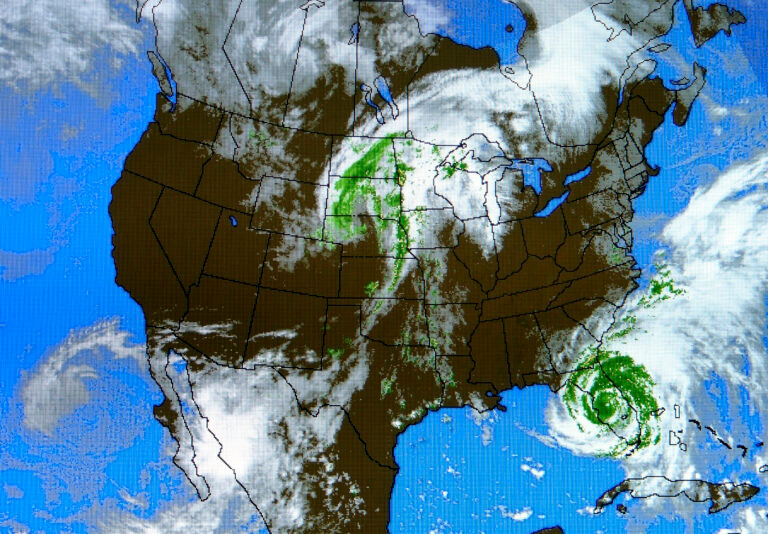As the hurricane season approaches, companies and emergency responders are bracing for another busy year. The National Oceanic and Atmospheric Administration (NOAA) has projected an above-average hurricane season for 2025. With storms increasing in both frequency and intensity due to climate change, air cargo companies are prepared to mitigate supply chain disruptions.
This year’s forecast
With models predicting an increase in the number of named storms, and a heightened risk of major hurricanes making landfall along the U.S. East Coast and the Gulf of Mexico. The Atlantic hurricane season typically sees anywhere from 12 to 16 named storms; this year is expected to top that.
In addition to strong winds, storm surges, and flooding, air cargo is particularly vulnerable to disruptions during hurricane season. Severe weather impacts not only airfield operations but also critical infrastructure such as warehouses, shipping hubs, and freight routes. Ports, airports, and other logistics hubs located in hurricane-prone regions, such as Florida, Texas, Louisiana, the Carolinas, and the Caribbean, are used to this volatility because it happens every year. However, while air cargo can be vulnerable to hurricanes, it remains an essential tool for delivering disaster relief.
Role in disaster response
When disaster strikes, time is of the essence, and traditional infrastructure, such as roadways and ports, often becomes inaccessible, leaving communities cut off from essential resources. In these moments, air cargo is a lifeline, facilitating the rapid delivery of essential supplies, including food, medicine, and medical equipment.
In the aftermath of Hurricane Katrina in 2005, cargo planes carried emergency supplies while also evacuating people from affected areas. In 2020, following Hurricane Laura, air cargo operations helped deliver millions of pounds of goods quickly to places that were unreachable by traditional means.
Logistics planners gear up
The Federal Emergency Management Agency (FEMA), along with local responders and logistics experts, is ramping up readiness efforts as the storm season nears and is prioritising areas with high levels of cargo activity, ensuring that critical supplies can be swiftly distributed in the event of a major storm.
For instance, the Port of Houston, one of the busiest shipping and air cargo hubs in the United States, is already implementing disaster-preparedness protocols. Houston’s history of hurricane activity, combined with its proximity to air and sea cargo operations, makes it an ideal case study for understanding the intersection of preparedness and operational continuity.
The cost of disruptions
The logistical challenges presented by major storms can have far-reaching consequences. It has been estimated that the 2025 hurricane season could pose a disruption risk of up to $12 billion to the global logistics sector. These disruptions come in various forms, including flight cancellations, damaged infrastructure, supply chain delays, and the additional cost of expedited delivery for critical goods.
In the aftermath of major storms, air cargo often serves as the fastest method of delivering emergency supplies. However, damage to infrastructure and limited access to key hubs can slow down or halt operations entirely. Airports, especially those located in coastal regions, are often forced to close when extreme weather conditions present themselves, potentially leaving thousands of tons of cargo stranded.
Aside from the inherent danger of taking flight in inclement weather, airlines face difficulties securing the necessary resources to fly during storms, as runways may flood and ground transport becomes impassable. These weather-related delays can disrupt the movement of everything from medical supplies and food to raw materials and high-value consumer electronics, often in high demand during times of such distress.
Preparing for the future
As climate change continues to impact global weather patterns, the risks associated with hurricane season are projected to increase. Given the growing risks posed by climate disruption, air cargo operators are increasingly turning to technology and innovation to enhance preparedness. Drones and autonomous vehicles are also being explored as a means to rapidly distribute goods in disaster areas cut off from supply chains.
Air cargo will continue to serve as a lifeline for storm-affected regions, delivering resources and facilitating recovery efforts. However, only by adapting to the realities of an unpredictable climate can air cargo triumph in the face of these disruptions. Looking ahead, through disaster preparedness, the evolution of technology, and innovative logistics solutions, the air cargo industry will be well-equipped to weather the storm, both literally and figuratively.





